Aloe komatiensis
Aloe komatiensis Reynolds
Family: Asphodelaceae
Common names: Komati aloe, Malelane aloe (Eng.); Komatipoort-aalwyn (Afr.)
Introduction
Aloe komatiensis is a summer-flowering, stemless succulent with leaves arranged in a tight spiral, creating a striking rosette of vibrant green leaves, often decorated with red hues during dry or hot, intensely sunny periods, and a tall flower stalk with many pale brick-red flowers. It grows in grasslands between Komatipoort and Malelane, in Mpumalanga.
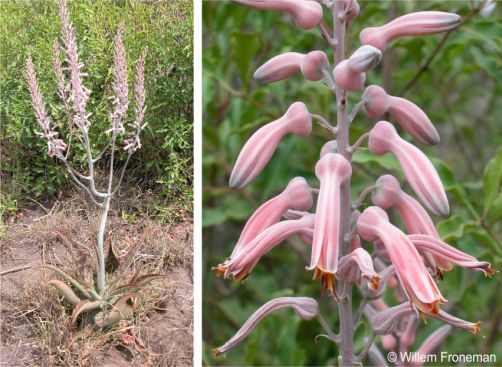
Description
Description
Aloe komatiensis is a dense, compact and stemless aloe, sometimes with a short stem that reaches up to 200 mm. This plant grows up to 300 mm in height. It is solitary but sometimes forms small groups. A single plant forms a rosette of about 20 leaves that are about 400 mm long and up to 100 mm broad. The leaves are fleshy, narrowly lanceolate, armed with sharp triangular, dark brown teeth along the margins, a typical aloe feature, and slightly recurving at the tips. The upper and lower surfaces of the leaves are different from each other. The upper surface is yellowish green to dull green with indistinct lines and faint whitish oval spots in undulating interrupted transverse bands. The lower surface is a more dull green than the upper surface, it also has the indistinct lines and is usually without spots. The leaf margins are armed with brown teeth that are almost triangular and pointed outwards. The leaf exudes a sap that turns a purplish colour when it dries.
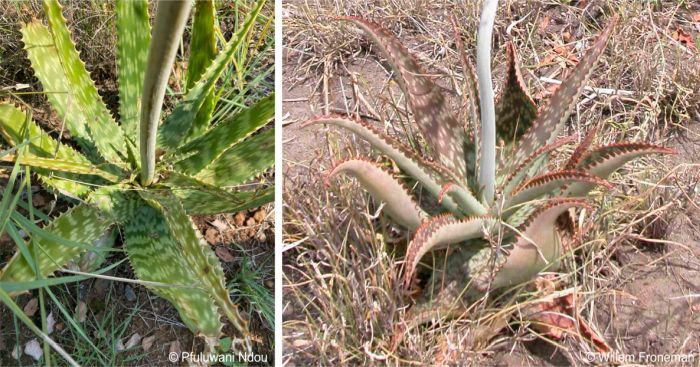
During the flowering season, which takes place in late summer, between February and April, Aloe komatiensis produces a striking, tall, slender, branched flower stalk that is covered in a grey powdery bloom, and can reach up to 2 m in height. The inflorescence is a dense, cylindrical raceme, 200-400 mm long, tapering gradually to a sharp point, that has about 40-50 lax, brick-red to orange-red flowers, covered with a greyish powdery bloom. The central raceme is taller, longer and has more flowers than the lateral racemes. Each flower is about 30 mm long, swollen at the base and fused in just above the ovary with a wide open mouth. The fruit is an ovoid, green capsule, containing numerous black seeds with light brownish wings.
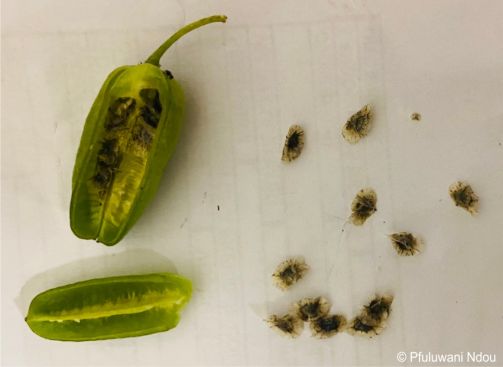
Conservation Status
Status
According to the SANBI Red List of South African Plants, Aloe komatiensis was assessed as Vulnerable (VU) in 2019. It was assessed as Endangered (EN) in 2015, a status that still appears on iNaturalist. Its current status was revised and updated based on a better understanding of the distribution and number of plants in the population.
This species has a restricted distribution range and is known to occur in eight locations in South Africa and two in Mozambique, and is declining due to ongoing habitat loss and degradation caused by crop cultivation, overgrazing, expansion of urban areas and rural settlements, and the spread of invasive alien plants within its small distribution range. The plants in the Komati River Valley face risks from mining activities, agriculture and urban development.
This species has also been flagged as Sensitive because of a recent surge in illegal collecting and selling of South African succulent plants for the international horticulture trade that has put many similar species under threat of extinction in the wild.
Distribution and habitat
Distribution description
Aloe komatiensis is endemic to southern Africa. This species occurs in South Africa, between Malelane and Komatipoort in Mpumalanga, and in southern Mozambique between Maputo and Marracuene. The natural habitat of Aloe komatiensis is warm, frost-free grassland and bushveld, with a relatively hot summer, and rainfall during the summer months but also experiencing dry periods in summer, and a cool, dry winter.
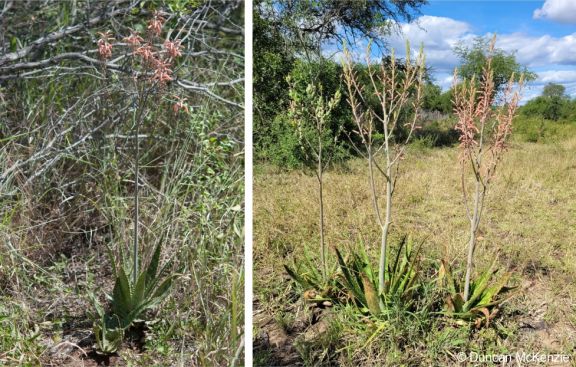
Derivation of name and historical aspects
History
The name Aloe is derived from the Arabic, alloeh, translated as allal in Greek and Hebrew, which means ‘shiny bitter substance’, referring to aloe sap that the plants exude. The species name komatiensis refers to its geographical area of origin, the Komatipoort, along the Komati River in Mpumalanga.
Aloe komatiensis is one of the summer-flowering maculate aloes, closely related to Aloe lusitanica and Aloe decurvidens. Previously these species were all included in the taxon Aloe zebrina due to their shared similar characteristic features. In the 1950s Aloe lusitanica and Aloe decurvidens were regarded as conspecific of Aloe komatiensis by Reynolds. In 1996, Van Wyk and Smith included Aloe komatiensis in the synonymy of Aloe parvibracteata, a species that flowers in winter, June to July, a big contrast to Aloe komatiensis. Smith, Figueiredo, Klopper and Crouch reinstated Aloe komatiensis as a distinct species in 2012.
Aloe is a genus of about 600 accepted species of flowering succulent plants, with the majority occurring in Africa with diversity centres in South Africa and Madagscar. South Africa has about 125 species that are documented as indigenous to South Africa. The are about 25 aloe species that have been clearly documented as medicinal plants. Most of the Aloe species are widely used for traditional and pharmaceutical and/or medicinal purposes, they have also gained popularity both domestically and internationally. They have been used for centuries for various unrelated human ills, such as correcting kidney ailments, development of mammary glands, headaches, reducing fever in children, but the most common uses that have been going on for many centuries are internal use as laxative and external uses in the treatment of skin injuries. Due to these reasons, the species of this genus are threatened with over-exploitation, especially those species that are rare, endemic and that are difficult to grow. There are many factors that contribute to making species threatened, but plant use is often the main deciding factor on the species survival.
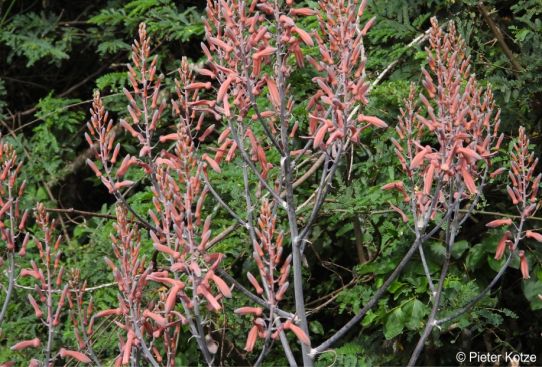
Ecology
Ecology
Aloe komatiensis grows in a hot and relatively dry climate, and is able to thrive in these conditions due to its succulent leaves that store water. This species is pollinated by bees and sunbirds that visit the flowers to collect nectar and pollen. The tall flower stalks helps the plant to stand out, and the flowers on top make it easily accessible to the sunbirds. Its basal rosette of leaves provide shelter for small invertebrates such as lizards, thus adding to the biodiversity of the ecosystem.
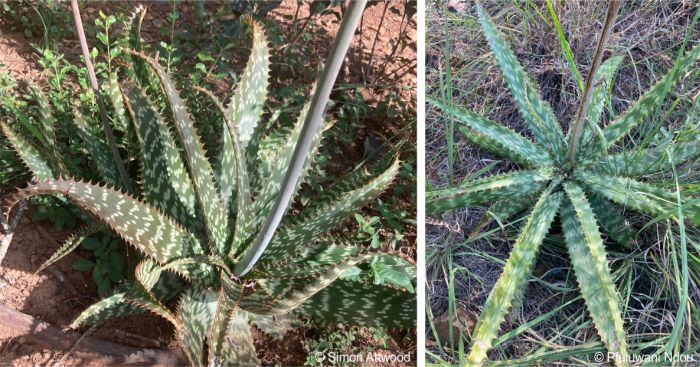
Uses
Use
There are no known records of Aloe komatiensis being used for medicinal or cultural purposes. Aloe komatiensis has an ornamental value and is a desirable addition to succulent collections and rocky gardens. Its distinctive spots on the leaf surface and tall inflorescence with bright red to orange flowers add on the plant’s ornamental appeal, creating a beautiful contrast to your garden. The growth form and size of this plants makes it an ideal plant for container gardening for urban gardeners facing limited space constraints.
Growing Aloe komatiensis
Grow
Aloe komatiensis is an easy growing species and requires little maintenance. It thrives in well-drained sandy soil, in an open, sunny position with occasional watering, and it needs protection from frost and heavy rain. Watering should only be done when the soil has dried completely, even a little moisture is still enough for this species during the growing season in summer when it is excessively hot. Too frequent watering of the soil can lead to root rot and should be avoided, especially in winter.
In your garden, place this species in a position where there is an exposure to bright and sunny condition to promote healthy growth and the beautiful contrast of colour on the leaves, as in the natural habitat. It should be completely protected from frost.
For containers it should be placed on sunny windows with long enough sunlight exposure, because the plant can only tolerate shorter periods of shade, longer shade periods leads to plant losing the attractive colours on its leaves by becoming pale and elongated.
Aloe komatiensis is propagated from seeds and division of offsets.
Seeds can be collected in autumn to winter, just after flowering, and stored in dry and cool conditions and sown in summer. Place the seeds in a tray with 2 parts of compost and 2 parts of river sand. Germination takes place after 2 to 3 weeks.
Offsets can be carefully separated from the mother plant using a sharp knife. After the removal of the offset, allow it to dry for few days to prevent it from rotting. Once it has dried, plant it in a growing medium that has good drainage, ensure it is watered enough, and place it in a place where it can receive sufficient sunlight.
References
- Amoo, S.O., Aremu, A.O. & Van Staden, J. 2014. Unraveling the medicinal potential of South African Aloe species. Journal of ethnopharmacology 153(1):19-41.
- Attwood, S. 2023. Observation of Aloe komatiensis, Mpumalanga. iNaturalist. Online. https://www.inaturalist.org/observations/151292598.
- Bornman, H. & Hardy, D. 1971. Aloes of the South African veld. Perskor Publishers, Johannesburg.
- Capasso, F., Borrelli, F., Capasso, R., Carlo, G.D., Izzo, A.A., Pinto, L., Mascolo, N., Castaldo, S. & Longo, R. 1998. Aloe and its therapeutic use. Phytotherapy Research 12(S1):S124-S127.
- Cousins, S.R. & Witkowski, E.T.F. 2012. African aloe ecology: A review. Journal of Arid Environments. 85:1-17.
- GBIF - Global Biodiversity Information Facility. Aloe komatiensis Reynolds. www.gbif.org/species/2777659. Accessed on 15/03/2025.
- Guildford Cycads. Aloe komatiensis: The Komati Aloe. www.guildfordcycads.com.au/aloe-komatiensis-the-komati-aloe-south-african-native/. Accessed on 15/03/2025.
- Kotze, P. 2024. Observation of Aloe komatiensis, Mpumalanga. iNaturalist. Online. https://www.inaturalist.org/observations/200276815.
- McKenzie, D. 2017. Ngwenya Lodge baseline terrestrial ecology study & biodiversity value assessment. https://sahris.sahra.org.za/sites/default/files/additionaldocs/D.3%20Ecology%20Report%20V3.%20Jan%202018.pdf.
- McKenzie, D. 2022. Observation of Aloe komatiensis, Mpumalanga. iNaturalist. Online. https://www.inaturalist.org/observations/147933798.
- Reynolds, T. 2004. Aloes: The genus aloe. CRC Press. Boca Raton, Florida.
- Sachedina, H. & Bodeker, G. 1999. Wild Aloe harvesting in South Africa. The Journal of Alternative and Complementary Medicine (5)2:121-123.
- SANBI National Sensitive Species List. Aloe komatiensis. https://nssl.sanbi.org.za/index.php/species/aloe-komatiensis. Accessed on 15/03/2025.
- Smith, G., et al. 2012. Summer-flowering species of maculate Aloe L. (Asphodelaceae: Alooideae) in the Aloe zebrina-complex from South Africa: reinstatement of four names, and description of A. braamvanwykii Gideon F.Sm. & Figueiredo. Bradleya 30:155-166
- Van Wyk, B. & Smith, G.F. 2014. Guide to the aloes of South Africa. Briza Publications, Pretoria.
- Von Staden, L. & McKenzie, D. 2019. Aloe komatiensis Reynolds. National Assessment: Red List of South African Plants. https://redlist.sanbi.org/species.php?species=2206-4040.
- WFO. The World Flora Online. Aloe komatiensis Reynolds. www.worldfloraonline.org/taxon/wfo-0000758354. Accessed on 15/03/2025.
Credits
Ziphezinhle Madonsela
Lowveld National Botanical Garden
May 2025
Acknowledgements: The author thanks Simon Attwood and Willem Froneman for providing images for this article, Pfuluwani Ndou for taking pictures during seed collection and for assistance in seed propagation and data collection, Pieter Kotze for providing images and assistance during seed collection, and Duncan McKenzie for sharing knowledge on the history of the conservation status of the plant.
Plant Attributes:
Plant Type: Succulent
SA Distribution: Mpumalanga
Soil type: Loam
Flowering season: Late Summer
PH: Acid, Neutral
Flower colour: Red, Orange
Aspect: Full Sun
Gardening skill: Easy
Special Features:
Horticultural zones
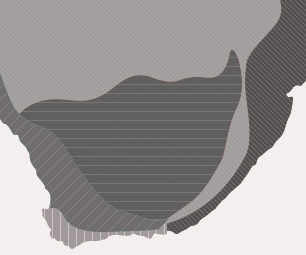







Rate this article
Article well written and informative
Rate this plant
Is this an interesting plant?
Login to add your Comment
Back to topNot registered yet? Click here to register.